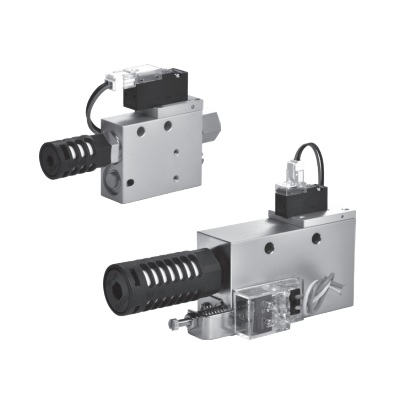2022-05-17
What Is A Vacuum Generator And How Does It Work; Here Is Everything You Need To Know About It!

What Is A Vacuum Generator And How Does It Work
Vacuum generators, widely known as vacuum pumps, are used to eliminate the gas and air modules from a closed volume leaving behind a partial vacuum. They are being widely used in various industries like food processing, agriculture, and pharmaceuticals.
Vacuum pumps are developed to remove a specific percentage of air modules in order to achieve a vacuum that is dependent upon the available atmospheric environment.
Ways In Which Vacuum Is Created
Vacuum generators create a vacuum in two ways; either by gas transfer or gas capture.
- Gas transfer: Under the gas transfer way, the vacuum is created by moving the gases with the help of the pump.
- Gas capture: Under this way of creating a vacuum, the gas is captured physically, and then it is held in a frozen state.
Different Types Of Vacuum Generator
While it might be perceived that vacuum generators are only used to remove the air and gas modules. However, the truth is there is more to the story and hence, it is significant that the types of the vacuum pumps are fully known before making a decision as to which one to install according to the needs.
While the types of vacuum generators are very vast, they can be divided into two general categories to make them more understandable and less complicated.
1. Primary Vacuum Generators
Primary generators exhaust directly to the atmospheric pressures.
The list of primary generators is below:
- Diaphragm
- Rotary vane
- Scroll
- Multi-sage root
- Screw pumps
2. Secondary Vacuum Generators
Secondary vacuum pumps require the assistance of primary vacuum generators to support their operations continuously.
Te list of secondary generators is below:
- Diffusion pumps
- Turbomolecular pumps
How To Choose A Vacuum Generator?
It’s impossible not to talk about the criteria on which the selection of the vacuum pumps would be made, so let’s dive into the things you need to consider before buying it.
Step-1: Consider the type of vacuum generator needed
First thing first, analyze according to your needs the type of vacuum generator that will fit well with your requirements. We have already identified the primary and secondary vacuum pumps.
Once you are considering the types of vacuum generators, don’t forget to look at the advantages and disadvantages they have to offer. This will help you narrow down your options and will make the selection process for the right vacuum generator easier for you.
Step-2: Vacuum level needed
Then you need to identify the level of vacuum you need. The vacuum level is shown as a relative value, and it is shown in relation to ambient pressure. So when a vacuum level is 75% then it means that pressure is lower than 75% of the ambient pressure.
Step-3: Consider the suction rate
Vacuum generators can be compared on the basis of suction rates which are either given in m3/h, I/min, or cfm. A high level of suction rate means that a pump evacuates the air and gas modules at the level. It should be known that a high level of suction rate is more significant than a high level of vacuum rate, hence, this is one aspect that you should be looking at in the vacuum generator.
Step-4: Evacuation time
This should be seen in the second that how much time is taken by the vacuum generator, in seconds, to create a specific level of vacuum.
Step-5: Air consumption
This considers the usage of compressed air by the vacuum pump to generate a particular level of vacuum.
Step-6: Cost
While other aspects might matter more in the decision-making, the capital cost is also very significant since it will be the money you will be paying to acquire the component. Now, what you need to see here is that there are two types of costs- investment, which is the initial cost. Then comes the maintenance cost. It is very likely that the vacuum generator that is coming with a high initial cost with require less maintenance in the future and vice versa.
Once you go through all of these steps, you will finally be able to find the best vacuum generator that sits well with your needs.
Now that we have figured out what is vacuum generator, is and have touched its details too, let’s have a look at how it works.
How Does A Vacuum Generator Work?
The operating principle for the vacuum generators is the pneumatic principle.
So basically, how a vacuum generator works is by following the pneumatic principle. The compressed air is introduced into the ejector. Now as the compressed air moved ahead, it comes to a point where the passageway is narrowed, here the compressed air is accelerated. The dynamic pressure escalates and the static air decreases. Once the compressed air is passed from the reduced cross-section, the vacuum is created. Air is sucked through another ejector point and the compressed air escapes from the third ejector through the silencer along with the sucked-in air.
Chelic
Getting hands-on high-quality vacuum generators can be difficult, especially when there are so many options in the market and you are absolutely clueless about which one should you get? In this case, you can rely on Chelic, founded nearly 3 decades ago; we have specialized in manufacturing vacuum generators and other automation components. We are a well-known brand in the industry for a reason- and that is we provide you with high-quality components. Furthermore, we are qualified OEM suppliers. We take pride in our customers and ensure that we provide the efficiency in their tasks along with our products while the cost is maintained low.
If you are in search of automation components or vacuum generators in particular, then you know where to go! To know more information, get in touch with Chelic, now!
